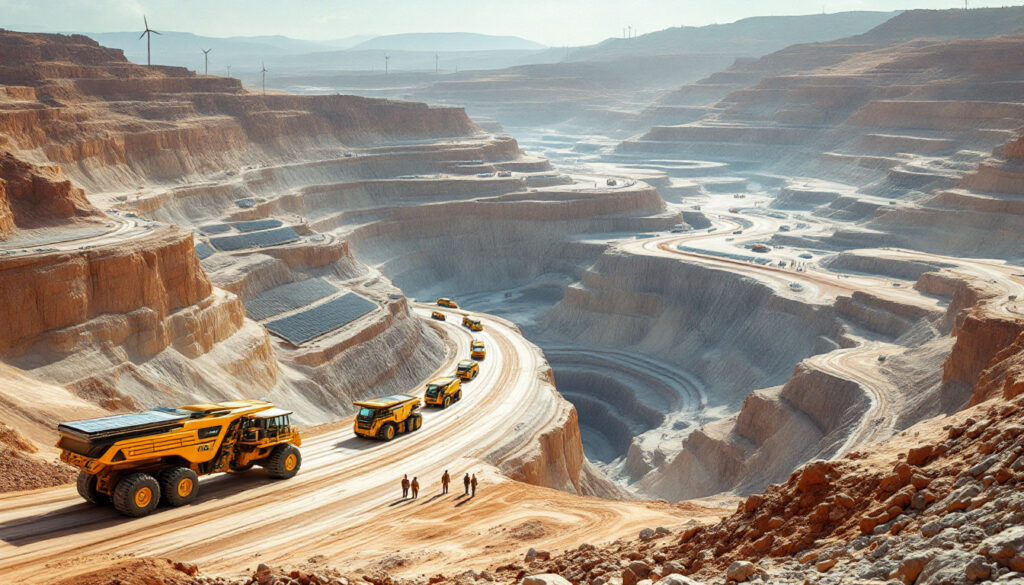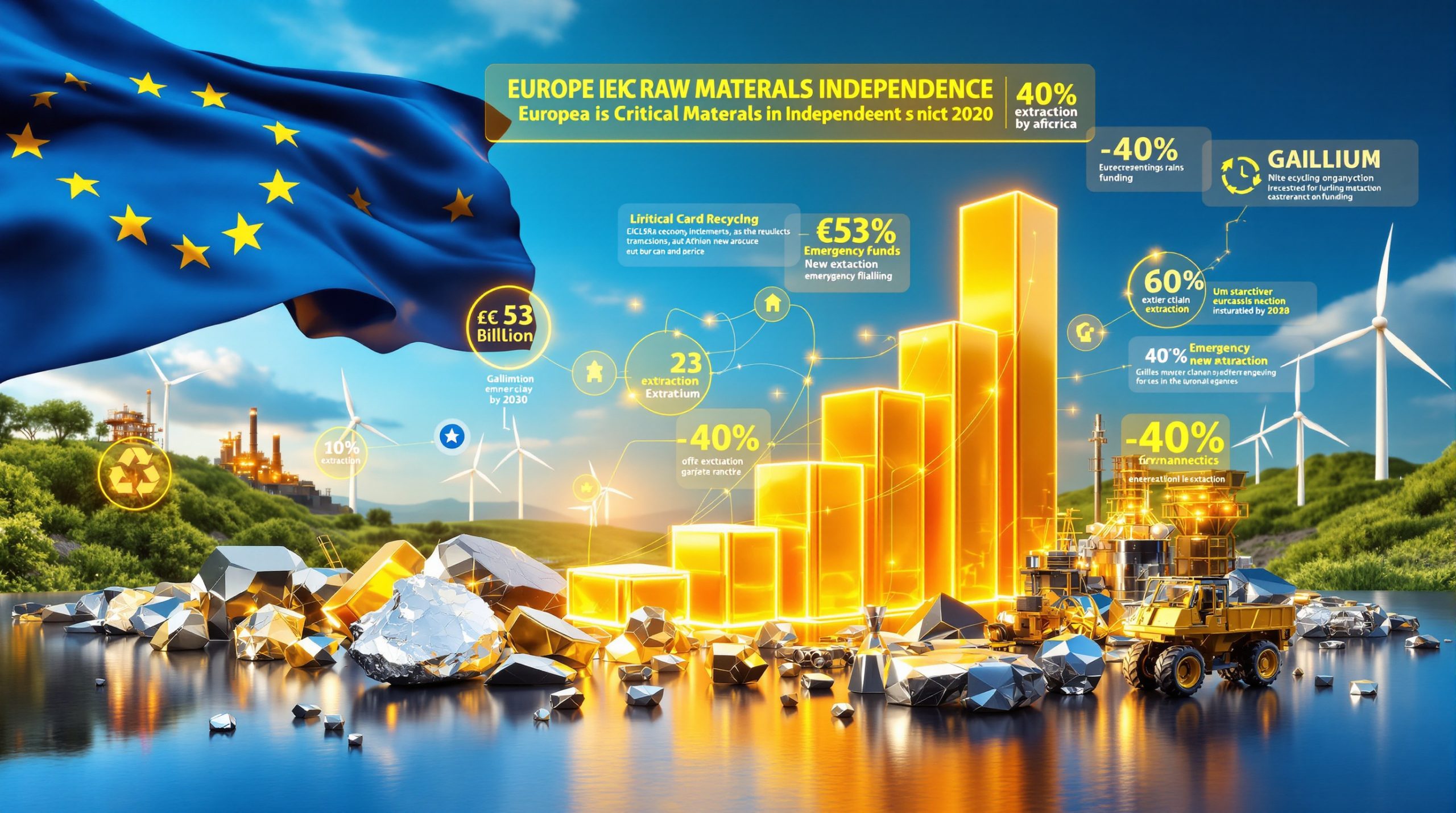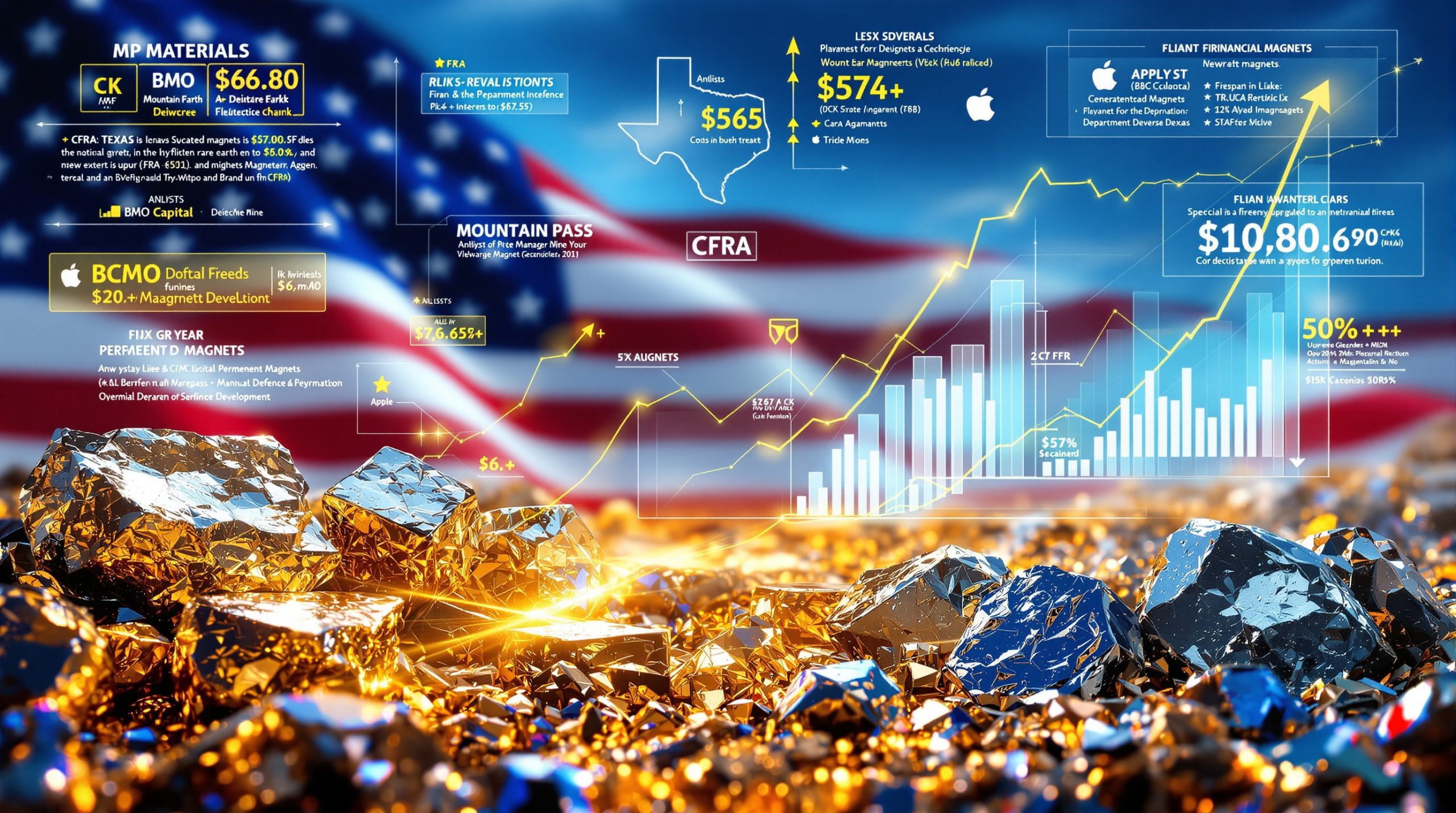How Is the Mining Industry Evolving?
The mining industry is undergoing a profound transformation driven by technological innovation, sustainability pressures, and shifting market dynamics. This evolution is fundamentally reshaping operational strategies, competitive landscapes, and value creation approaches for stakeholders worldwide. Understanding what is the future of the mining industry requires examining multiple interconnected trends affecting this vital global sector.
Key Performance Metrics Reshaping the Industry
The performance gap between industry leaders and followers has widened dramatically in recent years. Chinese mining giant Zijin Mining has delivered exceptional shareholder returns compared to Western competitors across multiple timeframes:
- Zijin Mining: +679% total shareholder return (10-year period)
- Vale: +372% (second place, significantly behind)
- Last 5 years: Zijin +52% vs. Glencore +19% (second place)
- Last 3 years: Zijin +51% vs. BHP -1% (second place)
- Last year: Zijin +11% vs. Anglo American +8% (second place)
These metrics demonstrate a consistent pattern of outperformance by Zijin Mining, highlighting the emerging competitive advantages of Chinese mining companies in the global marketplace.
What Competitive Advantages Are Reshaping Mining Leadership?
The mining landscape is being reshaped by several key competitive advantages that distinguish industry leaders from followers, creating new paradigms for success.
Cost Structure Optimization
Leading mining companies are gaining significant advantages through sophisticated cost structure optimization:
-
In-house engineering capabilities: Companies like Zijin Mining maintain their own engineering teams to design, build, and expand projects, avoiding third-party EPC contractors and their associated margins of 15-25%.
-
Supply chain integration: Access to domestic supply chains allows for sourcing equipment, materials, and services at lower costs, with Chinese companies often paying 30-40% less for comparable equipment.
-
Lean organizational structure: Flatter structures with centralized control minimize corporate overhead costs, with leading companies operating at 40% lower G&A expenses than industry averages.
-
Strategic project location: Prioritizing countries with lower wage costs and more permissive regulatory regimes (DRC, Serbia, Colombia) reduces operational expenses by up to 50% compared to projects in Western jurisdictions.
-
Comprehensive cost control systems: Implementing systematic cost management across all operations, from procurement to construction, resulting in 20-30% lower development costs per ton of processing capacity.
Access to Capital at Favorable Terms
Capital access has become a critical differentiator in the mining industry:
-
State-backed financing: Companies with government connections can access low-cost debt from state-owned banks at 2-3% lower interest rates than commercial financing.
-
Financial flexibility: Maintaining low debt levels provides the ability to act quickly during market downturns when acquisition opportunities arise, with industry leaders maintaining debt-to-EBITDA ratios below 1.0×.
-
Disciplined investment approach: Successful companies maintain consistent investment criteria regardless of market conditions, typically requiring IRRs exceeding 15% at conservative long-term commodity prices.
Strategic Acquisition Capabilities
The ability to execute strategic acquisitions effectively has become increasingly important:
-
Geopolitical positioning: Companies that can navigate complex jurisdictions gain access to resources unavailable to competitors with stricter ESG challenges & global opportunities in mining, accessing deposits with 30-50% higher grades.
-
Disciplined deal-making: Successful acquirers maintain price discipline even during commodity booms, refusing to pay more than 0.7-0.8× NAV for quality assets.
-
Government alignment: Partnerships with host governments create favorable operating conditions, reducing permitting timelines by 40-60% compared to adversarial relationships.
What Technological Innovations Are Transforming Mining Operations?
The future of the mining industry is being shaped by technological advancements that improve efficiency, safety, and sustainability across the value chain.
Automation and Digitalization
Mining operations are increasingly embracing automation and digital technologies:
-
Autonomous equipment: Self-driving trucks, drills, and loaders are reducing operational costs by 15-20% while improving safety metrics by up to 70%.
-
Digital twins: Digital twins boost mining efficiency by creating virtual replicas of physical assets that enable better monitoring, maintenance, and optimization, reducing unplanned downtime by 30-45%.
-
AI and machine learning: Advanced algorithms are optimizing processes from exploration to processing, improving resource conversion rates by 25-35% and reducing energy consumption by 10-15%.
Sustainable Mining Technologies
Environmental considerations are driving innovation across the mining sector:
-
Electrification: Battery-electric vehicles and equipment are reducing emissions by 50-60% and operating costs by 20-30% through lower maintenance and energy requirements.
-
Renewable energy integration: Solar, wind, and battery storage systems are powering remote operations, reducing diesel consumption by 30-60% and lowering the carbon footprint significantly.
-
Water conservation technologies: Closed-loop systems and advanced filtration are minimizing water usage and environmental impact, with leading companies reducing freshwater consumption by 40-70%.
How Are Financing Models Evolving in the Mining Sector?
The mining industry is seeing significant changes in how projects are financed and how capital is allocated, creating new opportunities and challenges. According to recent mining & finance predictions for 2025, several key trends are emerging.
The Rise of Royalty Companies
Royalty and streaming companies like Franco-Nevada are playing an increasingly important role in mining finance:
-
Franco-Nevada has consistently outperformed both gold miners and metal prices since its listing, delivering a 509% return over the past decade compared to 60% for major gold producers.
-
Their investment strategy prioritizes:
- Ensuring capital recovery (focus on economically viable projects in the lowest quartile of the cost curve)
- Targeting properties with expansion potential (minimum 2-3× multiple of current size)
- Maintaining financial flexibility (zero debt policy)
- Investing opportunistically during market downturns (deployed over $2 billion during 2008, 2015-2016 downturns)
Changing Capital Allocation Priorities
Mining companies are adjusting their capital allocation strategies to adapt to market conditions:
-
Growth vs. returns: Some companies prioritize reinvesting for production growth while others focus on capital returns to shareholders, with leading companies targeting 30-40% of free cash flow for shareholder returns.
-
Disciplined investment criteria: Leading companies maintain consistent investment criteria regardless of commodity price cycles, typically using long-term price assumptions 15-25% below spot prices.
-
Financial flexibility: Maintaining strong balance sheets to capitalize on opportunities during market downturns, with target liquidity levels of 1.5-2× annual sustaining capital expenditures.
What Are the Key Geographic Shifts in Mining Investment?
The global mining landscape is experiencing significant geographic shifts in investment and development patterns.
Emerging Mining Jurisdictions
New regions are becoming increasingly important in the global mining ecosystem:
-
DRC: Significant copper and cobalt resources attracting major investment despite jurisdictional challenges, with grades averaging 3-4× global averages for copper and controlling 70% of global cobalt reserves.
-
Serbia: Emerging as an important lithium source in Europe, with the Jadar project containing 10% of global lithium reserves in a single deposit.
-
Colombia: Attracting increased mining investment, with coal exports valued at $7.8 billion annually despite regulatory uncertainties.
-
Ecuador: Potential for significant future development, with only 10% of the country's mineral potential explored despite sharing the same geological belt as Peru and Chile.
China's Growing Global Influence
Chinese mining companies are expanding their global footprint at unprecedented rates:
-
Zijin Mining has made strategic acquisitions in Africa, South America, and Australia totaling over $12 billion in the past decade.
-
Chinese companies often align with China's Belt and Road Initiative and national resource security goals, providing additional diplomatic and financial support.
-
Host countries frequently welcome Chinese investment due to broader economic ties and infrastructure deals, with typical infrastructure commitments of $1-3 billion accompanying major mining investments.
How Is ESG Reshaping Mining Investment Decisions?
Environmental, Social, and Governance (ESG) considerations are fundamentally changing how mining companies operate and invest across jurisdictions.
Divergent ESG Approaches
Different approaches to ESG are creating competitive dynamics in the global mining industry:
-
Western miners face stricter ESG constraints from investors and regulators, with ESG-linked financing now representing over 30% of new capital raised.
-
Chinese companies can sometimes operate in jurisdictions where Western companies hesitate, accessing resources with 25-40% higher returns on capital.
-
ESG performance is increasingly linked to access to capital and social license to operate, with companies in the top ESG quartile enjoying 10-15% lower costs of capital.
Community Relations and Social License
Maintaining community support has become essential for project success:
-
Companies are developing more sophisticated approaches to community engagement, allocating 1-2% of operational expenditure to community development initiatives.
-
Some mining companies offer host governments equity stakes of 10-30% to align interests and secure regulatory support.
-
Social license to operate has become a critical factor in project success, with community opposition delaying projects by an average of 3-5 years when inadequately addressed.
What Does the Future Hold for Gold Mining?
Gold mining is experiencing unique dynamics within the broader mining industry, creating both opportunities and challenges.
Gold Price Dynamics
The gold price trends and investment insights have reached record levels, recently hitting AU$5,000 per ounce, driven by multiple macroeconomic factors:
-
Central bank policies ("printing money") with major economies expanding money supply by 20-40% since 2020.
-
Geopolitical uncertainties including trade tensions, regional conflicts, and currency devaluation concerns.
-
Inflation concerns with CPI increases reaching multi-decade highs in major economies.
Exploration Challenges
Gold exploration companies face significant challenges in converting discoveries into valuable assets:
-
Early exploration success can lead to rapid share price increases followed by corrections if follow-up results disappoint, with typical volatility of 50-100% during exploration phases.
-
The case of Caprice Resources demonstrates this volatility, with a 30% share price decline following disappointing follow-up drilling results despite initial high-grade intercepts.
-
Maintaining investor confidence requires consistent results across multiple drilling programs, with successful companies maintaining discovery costs below $50/oz.
Emerging Trends Shaping the Mining Future
Several emerging trends are set to fundamentally reshape what is the future of the mining industry over the coming decade.
Critical Minerals Supply Chain Reconfiguration
The global race for critical minerals is creating new geopolitical alignments:
-
Western nations have identified 35-50 minerals as strategically critical, with supply deficits projected for lithium (50%), cobalt (30%), and rare earths (40%) by 2030.
-
Friendshoring initiatives are redirecting investment toward politically aligned nations, with investment flows increasing 300-400% in countries with strategic partnership agreements.
-
Vertical integration attempts are accelerating, with downstream manufacturers directly investing in mining projects to secure supply, representing a 5-7× increase compared to historical patterns.
Innovation in Mineral Processing
Technological breakthroughs are transforming how minerals are processed and refined:
-
Solvent extraction technologies are reducing processing costs by 20-30% while improving recovery rates by 10-15%.
-
Bioprocessing methods using specialized bacteria to extract metals are reducing environmental impact by 40-60% compared to traditional methods.
-
In-situ recovery techniques are enabling extraction from previously uneconomic deposits with 50-70% lower capital intensity than conventional mining.
The clean energy transition in mining represents both a challenge and opportunity for the industry, requiring new approaches to extraction and processing while creating unprecedented demand for critical minerals.
FAQ: The Future of Mining
What companies are leading the mining industry transformation?
Chinese mining giant Zijin Mining has delivered exceptional shareholder returns compared to Western competitors, with a 679% total shareholder return over a 10-year period. Other significant players include Vale, Glencore, BHP, and Anglo American, though all have significantly underperformed Zijin in recent years. The performance gap demonstrates the growing competitive advantages of companies employing more aggressive growth strategies and operating with lower cost structures.
How is technology changing mining operations?
Mining operations are increasingly embracing automation and digital technologies, including autonomous equipment, digital twins of physical assets, and AI/machine learning algorithms. These technologies are reducing operating costs by 15-30% while improving safety metrics by up to 70%. Sustainable technologies like electrification, renewable energy integration, and water conservation systems are also transforming operations, with leading companies reducing their environmental footprint by 40-60% compared to conventional operations.
What role do royalty companies play in mining finance?
Royalty companies like Franco-Nevada provide consistent capital to mining projects, particularly during market downturns when traditional financing is expensive or unavailable. They focus on projects with strong economics and expansion potential, maintaining financial flexibility by avoiding debt. This model has delivered superior returns, with royalty companies outperforming physical miners by over 300% in the past decade. Their zero-debt approach allows them to invest opportunistically during market downturns, deploying over $2 billion during the 2008 and 2015-2016 downturns.
How are ESG considerations affecting mining investments?
ESG considerations are creating divergent competitive dynamics, with Western miners facing stricter constraints from investors and regulators compared to some international competitors. Companies in the top ESG quartile enjoy 10-15% lower costs of capital, while ESG-linked financing now represents over 30% of new capital raised in the sector. Modern mining companies are allocating 1-2% of operational expenditure to community development initiatives and offering host governments equity stakes of 10-30% to align interests and secure support.
What geographic regions are emerging as important mining jurisdictions?
The DRC (copper and cobalt), Serbia (lithium), Colombia, and Ecuador are emerging as increasingly important mining jurisdictions, despite some presenting jurisdictional challenges. The DRC controls 70% of global cobalt reserves with copper grades 3-4× global averages, while Serbia's Jadar project contains 10% of global lithium reserves in a single deposit. Chinese mining companies are expanding their global footprint in these regions, often aligning with China's Belt and Road Initiative and making typical infrastructure commitments of $1-3 billion accompanying major mining investments.
Want to Stay Ahead of Major ASX Mineral Discoveries?
Discovery Alert's proprietary Discovery IQ model delivers instant notifications on significant ASX mineral discoveries, translating complex data into actionable investment opportunities before the broader market reacts. Visit Discovery Alert's discoveries page to explore how historic finds have generated extraordinary returns for early investors.




